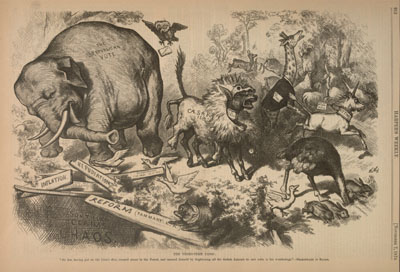and I am not gay!
I think the crush is the kind that you have for an extremely intelligent and articulate person who you know you will never be able to win a debate against, so you simply capitulate and give her all your admiration, starry eyes and all.
So far, I have only seen her shows twice since we do not have cable at home. Now I want it!! Or, I can manage to travel more frequently so I can watch her show while eating a quart of ice cream in the hotel room. (Shhh, don’t tell my kids!) I have never seen a cable news show where I laugh out loud almost through the entire show. He wry sense of humor is superb. Simply divine.
It is so strange: I have never even heard of her before until one day, she was a guest on Conan O’Brien. (Conan is another one of my favorites, deceivingly simple and anti-intellectual, yet I believe that there are lots of well-functioning brain cells under that coif of his…) Even just chit chatting, she exudes intellect, wittiness, and grace. (I know, “grace” is an odd word of choice to describe a butch lesbian… But that’s exactly the word came to mind when I saw her…)
Am I gushing?
But she also decidedly has that “girl next door” charm. Only that girl has a Doctorate from Oxford and is extremely well versed in world politics and any cultural subject you can throw her way, that you just want to shut up and listen to her, and be entertained.
Below are some of my favorite parts from the New York Magazine article on her published this November:
This well-written article started with Dr. Maddow’s 12-second explanation of what Dadaism is to the cable audience (as she was trying to make an analogy between Dadaism and McCain’s fixation on Joe the Plumber. Try that at home, I dare you!)
Ever heard of something called Dada?”
Rachel Maddow is trying to make an analogy. It’s mid-October, two weeks before the election, and the MSNBC host is comparing the McCain campaign’s recent fixation on “Joe the Plumber” to the anti-bourgeois cultural movement of the early-twentieth century. But this is prime time, and Maddow first has to define Dadaism in as colloquial a way as possible. This is something of a challenge considering she only has about twelve seconds.
“Deliberately being irrational, rejecting standard assumptions about beauty or organization or logic,” she begins. “It’s an anti-aesthetic statement about the lameness of the status quo … kind of?” She twists her face into a cartoon grimace that morphs into a wide smile. “Why am I trying to explain Dadaism on a cable news show thirteen days from this big, giant, historic, crazy, important election that we’re about to have?” she asks with a self-deprecating laugh, as she recognizes the Dadaishness of her own quest. “Because that’s what I found myself Googling today, in search of a way to make sense of the latest McCain-Palin campaign ad!”
As I was trying to figure out WHY I immediately gravitated towards her show, New York explains on my behalf:
“There’s something about the mix of personal details that is—to a young, educated, left-leaning, cosmopolitan audience—instantly recognizable. As one New York acolyte told me, “She is more like one of my friends than anyone else on television.” And her ratings have been astounding, especially in the coveted 25-to-54-year-old demographic. Maddow averaged a higher rating with that group than Larry King Live for thirteen of the first 25 nights she was on the air, enabling the network to out-rate CNN in that time slot for the first time. It’s an impressive feat, even given the fact that the show started two months before the election when political interest was at a fever pitch.”
